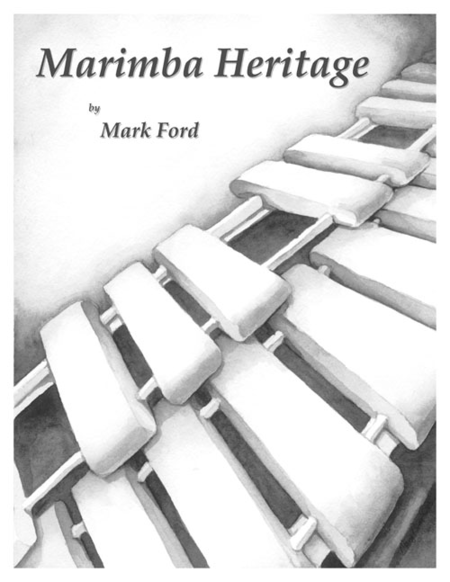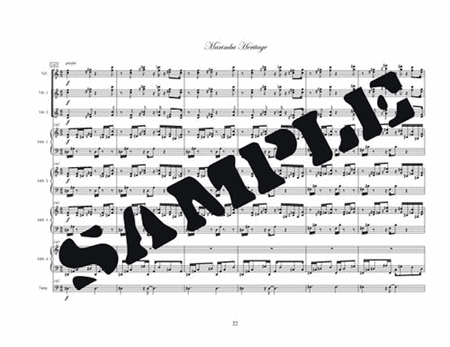Marimba Heritage
-
Ships in 4 to 6 weeks
Details
Description
SKU: IP.E-MF-HER
Composed by Mark Ford. Score and set of parts. Innovative Percussion #E-MF-HER. Published by Innovative Percussion (IP.E-MF-HER).8.5x11 inches.
Composer's notes: Marimba Heritage is an original composition that honors the history of solo marimba literature. Motives from many well-known marimba solos are woven into this new composition. While I considered numerous marimba works as I prepared to compose, the list below represents the marimba solos that inspired this music. All of these benchmark works were pivotal in guiding the pedagogical/artistic path of solo marimba literature. Marimba Heritage was commissioned by Dr. Brett Dietz and the Louisiana State University Percussion Ensemble and premiered at LSU on March 29, 2009. The work features the power and energy of marimba music that has inspired thousands of percussionists for more than 60 years.
"As the title suggests, this new work for percussion ensemble guides listeners through a collection of musical vignettes as it honors the history of solo marimba literature by incorporating motives from marimba works that are considered standards in the genre. The piece is scored for eight percussionists and requires two low-A marimbas, one low-F marimba, one 5.0-octave marimba, two vibraphones, one xylophone and a set of bells (played by one player), and one set of timpani. Throughout this seven-minute work, Ford quotes such familiar pieces as "Furioso and Valse" by Hatch, "Etude in C Major" by Musser, and "Velocities" by Schwanter. At no time do these musical quotes seem hokey or tawdry; this composition comes across quite tastefully as it pays homage to these "benchmark works that were pivotal in guiding the pedagogical/artistic path of solo marimba literature." All four marimba players must be well versed in four-mallet technique and musicianship to achieve performance success, but not necessarily familiar with the pieces that are quoted. The remaining players serve primarily as reinforcement, harmony, or countermelody as the marimbists effectively lead the performers, as well as the audience, through the musical voyage. This work will appeal to a broad spectrum of listeners and is sure to become a standard in percussion ensemble repertoire." - Joshua D. Smith, Percussive Notes, September 2010.


 Share
Share